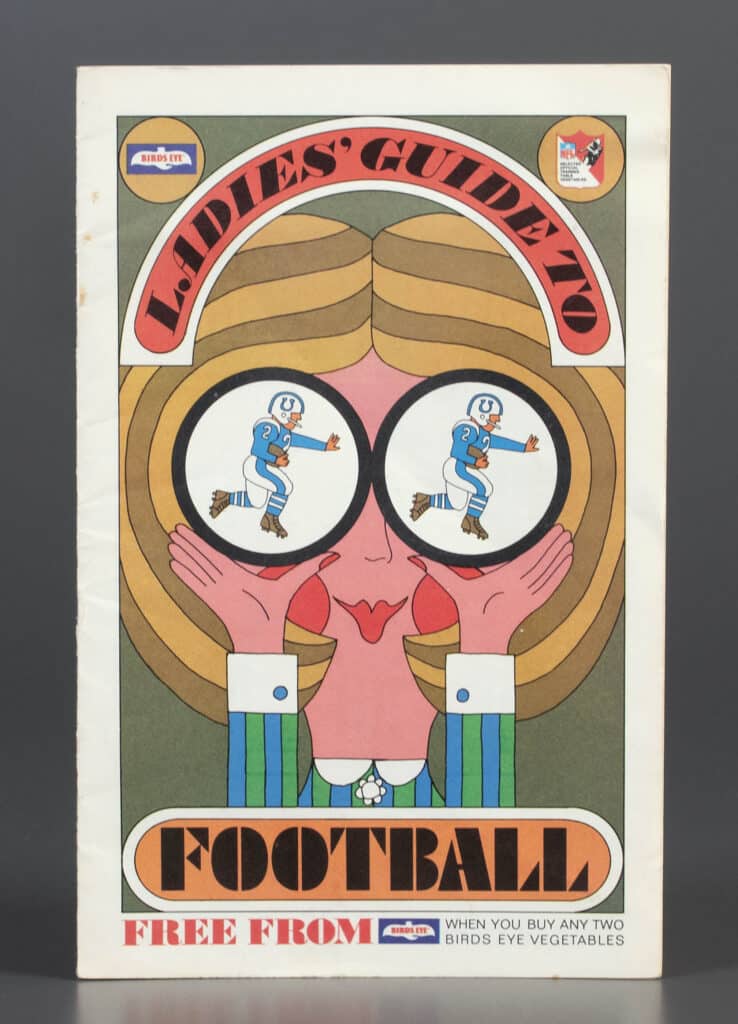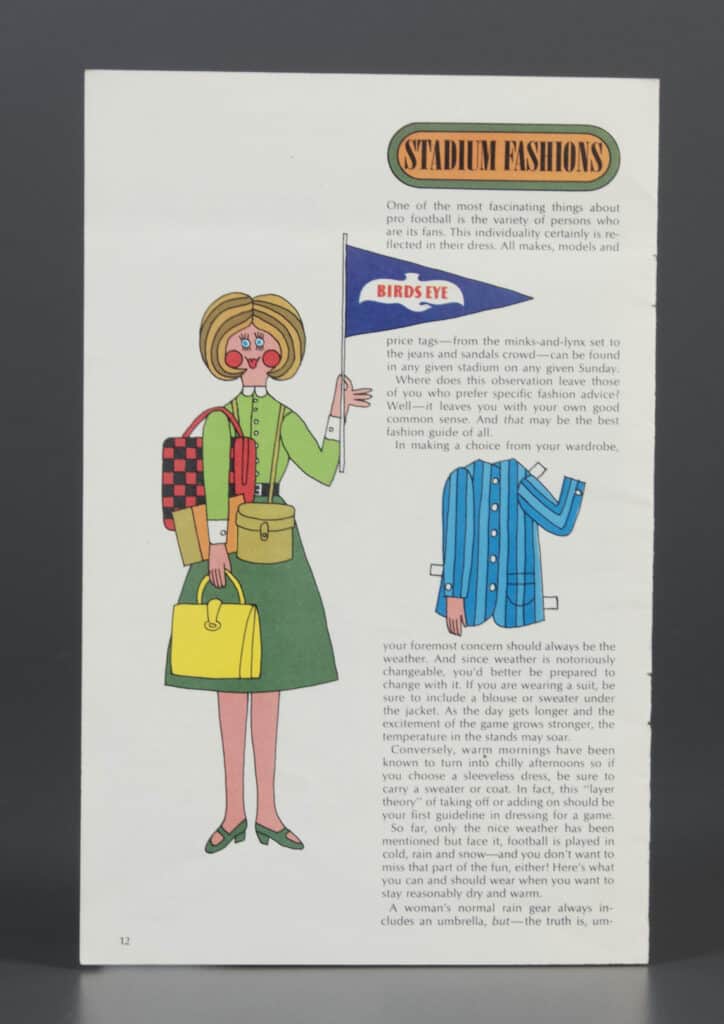
A recent addition to The Strong museum’s collection got me thinking about how gender intersects with professional football and what’s changed (or hasn’t) since the mid-1960s.
The item that caught my eye was a 1966 promotional booklet from Birds Eye frozen foods. Titled “Ladies’ Guide to Football,ʺ It’s filled with pop-art illustrations, the rules of the game, recommended stadium attire, and recipes requiring Birds Eye products (of course). The booklet was “dedicated to those women for whom autumn Sunday afternoons are indeed the loneliest hours in the week; to those women who hate to see Fall arrive (especially since Fall, in the form of professional football, now begins in late July); to those women who cope with the kids six days a week and when it’s Daddy’s turn on Sunday–find him long gone to the stadium or equally long gone in front of the TV, watching football from August to January.ʺ At the time, football was considered a quintessentially masculine pursuit. The booklet reaffirmed that women were relegated to the sidelines and most appropriate as the “hostess” responsible for preparing All-American casseroles, onion-topped green beans, and beef stroganoff.

Just a year after the booklet’s publication, Cleveland talent agent Sid Friedman sought to recruit a group of women to form the Women’s Professional Football League. Friedman’s plan was gimmicky as he reportedly wanted “a Harlem Globetrotters setup.” Yet, the women he enlisted (mainly from small-town lesbian bars) took the game seriously. In 1974, the National Women’s Football League (NWFL) was formed and consisted of seven teams including the Toledo Troopers, Los Angeles Dandelions, California Mustangs, Columbus Pacesetters, Dallas Bluebonnets, Fort Worth Shamrocks, and Detroit Demons. Players came from diverse racial and socioeconomic backgrounds and their previous roles ranged from hair stylists to truck drivers to stay-at-home moms. Many had never played football before, but they exhibited the determination to make it as professional athletes. During her tenure with the Toledo Troopers, Linda Jefferson rushed over 1,000 yards and averaged 14.4 yards per carry. She became the first Black woman inducted into the Semi-Pro Football Hall of Fame. Rose Low of the Los Angeles Dandelions was a first generation Chinese American. Her parents did not find out she was playing football until they saw her stellar performance on television. At 4’11” and 100 pounds, quarterback Pam Hardy Fisher won multiple awards including Rookie of the Year, Most Valuable Player, and Best Offensive Player.
Despite their accomplishments and sacrifices, the media tended to focus on the NWFL players’ appearances and often inquired about their male significant others. The NWFL drew an audience—many cheered the teams on, while others shouted things like “get back in the kitchen!” But the timing was right—it was during the midst of the second wave feminist movement, and in 1972, Title IX was enacted. It prohibited federally funded educational institutions from discriminating against students or employees based on sex. Yet the authors of Hail Mary: The Rise and Fall of the National Football League argue that homophobia and sexism ultimately undermined the league’s success.
The NWFL paved the way for many women interested in ditching the casseroles or foregoing the role of bench warmer in the latest ski fashions to become active parts of game play. My dad was a diehard Buffalo Bills fan and many of my childhood memories involve sharing our love of the game. From tossing a football around with him on sunny afternoons to meeting Will Wolford, I never felt like a passive spectator. And today the ranks of ardent football fans seem to be populated with as many women as men. The roar of the crowd from the stadium isn’t just basses and tenors anymore!



